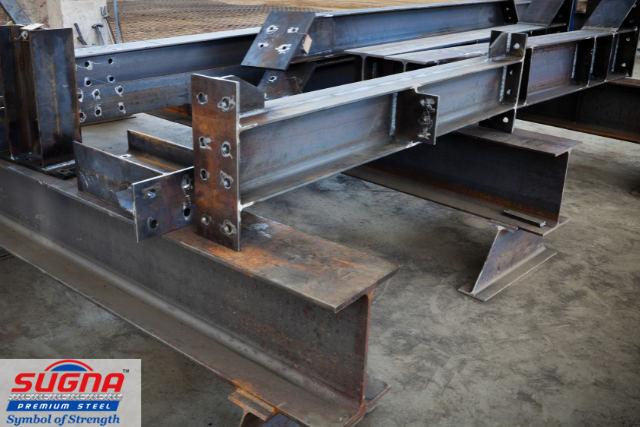Ever pondered about the force holding up the skyscrapers touching the sky or the stability of your dwelling place? Look no further than steel beams. They form the very essence of structural strength and versatility. Herein, we delve into the magnificent world of steel beams, exploring their types, manufacturing processes, applications, and so much more. So let’s jump in and navigate the fascinating realm of these indispensable building materials.
Steel Beams: The Unsung Heroes of Construction

We often marvel at architectural wonders without giving a second thought to the steel beams forming their skeletal framework. Providing the much-needed strength and support, steel beams are the unsung heroes of the construction world.
Diverse Types of Steel Beams: There’s One for Every Need
The world of steel beams is as varied as it is complex. From I-beams, H-beams, to T-beams, each one possesses unique characteristics, fitting the needs of different architectural designs.
I-Beams: The Standard of Strength
I-beams are the most common form of steel beams, known for their strong and efficient designs. Their distinct shape makes them highly resistant to bending and shear forces.
H-Beams: Embodying Stability and Balance
H-beams, also known as wide flange beams, are noteworthy for their wider flanges and superior balance, making them a popular choice for heavy load-bearing structures.
T-Beams: The Perfect Fit for Complex Designs
T-beams, distinguished by their T-shape, are the ideal fit for complex architectural designs. Their unique shape offers the versatility required for intricate structural layouts.
Steel Beams in Action: Numerous Applications
The application of steel beams is not limited to high-rise buildings alone. They find use in bridges, tunnels, and even residential buildings. Let’s delve into their multifarious applications.
Steel Beams in Skyscrapers: The Giants of Strength
Can you imagine skyscrapers without steel beams? Probably not. They’re the pillars of strength that allow these towers to rise to dizzying heights.
Steel Beams in Bridges: The Links of Connectivity
Bridges are another common application of steel beams. Be it the iconic Golden Gate Bridge or your local overpass, steel beams play a crucial role in their construction.
Steel Beams in Residential Construction: The Unsuspected Backbone
Not just skyscrapers or bridges, even your cozy home likely has steel beams supporting its structure. They provide strength and durability to residential constructions, ensuring your safety.
FAQs about Steel Beams
How much do steel beams cost?
The cost of steel beams varies depending on their type, size, and the current market price of steel. On average, the cost can range from $100 to $400 per foot.
What are the different types of steel used in beams?
Steel beams are commonly made from structural steel types, including A36, A572, and A992. Each type of steel has different properties, making it suitable for specific applications.
How are steel beams installed in construction?
Steel beams are installed by a process called bolting or welding. The method used depends on the specific project requirements and the type of beams used.
Why are steel beams often coated or painted?
Steel beams are often coated or painted to prevent rust and corrosion. This coating also enhances the aesthetic appearance of the beam.
Are steel beams recyclable?
Yes, steel beams are 100% recyclable. In fact, steel is one of the most recycled materials globally, contributing to the sustainability of the construction industry.
Are there any alternatives to steel beams in construction?
While steel beams are popular, there are alternatives like wood beams and concrete beams. However, they may not offer the same strength and durability as steel beams.
Conclusion: Steel Beams – The Pillars of Modern Construction
Steeped in strength, durability, and versatility, steel beams undeniably form the backbone of modern construction. Their manifold applications, coupled with their adaptability, make them an integral part of our infrastructure. The future of steel beams, bright with innovations, holds untold potential, ready to be unleashed in the world of construction.

